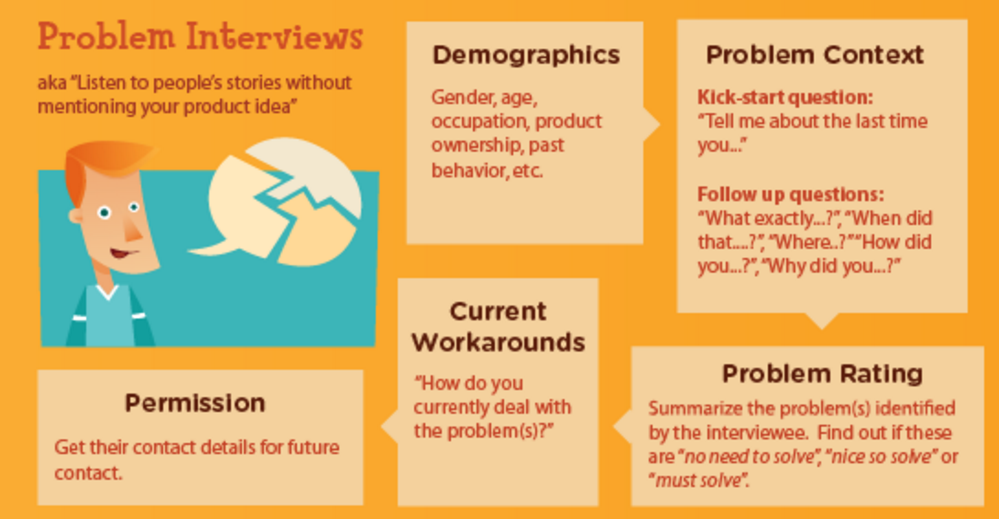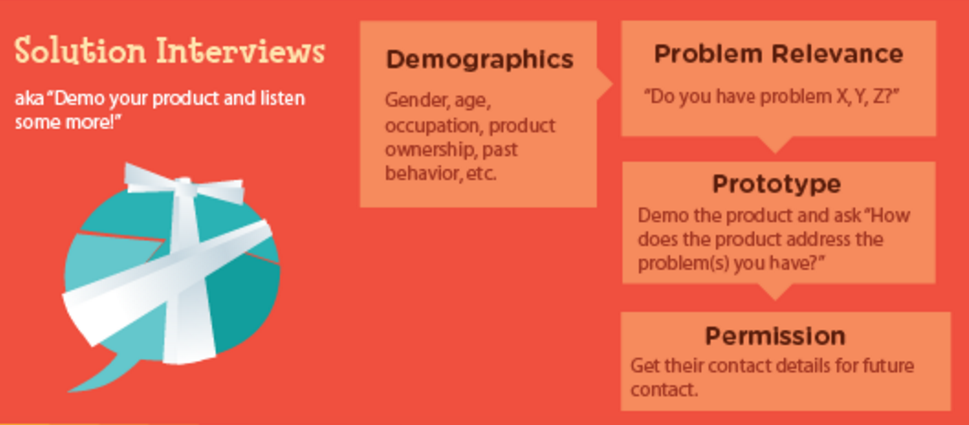
Last update: November 25
Customer development is one of the first and most integral steps that entrepreneurs have to take when they go about launching a startup. Yet, many first-time entrepreneurs don't really know how to do it well.
In a talk from Barcelona Founder Institute, Justin Wilcox, Founder of Customer Dev Labs shares his knowledge about customer development, and the do's and don'ts of this process.
In this post, we've listed Justin Wilcox's best insights.
The No. 1 Rule of Customers
The number 1 rule of customers is that they don’t buy products. Customers buy solutions to problems. No one cares about your product, they are interested in the problems you can solve for them. Customer development is hence a search for challenges you can tackle and discovering which people you can help.
How do you find problems? You ask customers. But how do you do that?

Surveys
The first way is through surveys. The benefits of surveys are that they are fast, easy and quantitative.
However, this strategy has numerous downsides. Firstly, questionnaires can be useless, and at the early stage, often do more harm than good. Think of them as of rose-colored glasses that can provide false positives or rationale some idea that you have via data.
Take this one for example:
- How far do you walk to/from work?
- Would you like to spend less time commuting?
- How much would you pay to cut your commute in half?
Your possible findings could be this:
- Commuters walk on average 1.3 km
- 87% would like shorter commute times
- 67% would pay $5/day for a shorter commute
Thus, you might end up building a segway. Yet very few of us own these things. The segway may be an awesome product but that’s about it.
It is hardly ever the case that founders can put together a solid survey because it is so hard to do it right. It's highly possible that they will lead you in the wrong direction. You think you are building something the world needs, when you are actually not.
Secondly, another detriment of surveys appears when there's no plan B. If respondents answer no, you do not know why it is not going to work. There is no exit strategy in your survey.
Thirdly, people don’t care about your questions. Everyone often skims right through the doc you sent them and rushes to finish it, resulting in inaccurate answers.
In summary, while surveys are a start to customer development, try to use other methods to get a better understanding of your potential market.

Interviews
While interviews can provide more reliable data than surveys, they also come with their drawbacks. For example,
- They are hard.
- They take time because you need 1 on 1 conversations with people.
- They are qualitative, not quantitative.
The Advantages of Interviews
1) Find problems
You do not have to guess about these 3 questions:
- Are you solving a problem?
- Do customers care?
- Is this worth your time?
You will actually know, and more than that, you will feel whether this is the right product for you.
2) Find Answers
You will find out the answers about these aspects.
- Will customers pay
- Where your customers are
- What marketing copy you should use
3) Find options
You will find out about
- Plan B
- Plan C
- Plan D
How do you interview
Rule #1 Don’t talk about your idea.
If you do that, you will not be able to discover your customer's’ problems. The discussion will narrow down to being just about your idea, when it may actually not be the real big issue that your customer is facing, and there may be other better solutions that you miss out on.
Rule #2 Never ask about the future.
Any question that has the word “would” is bad. Your customer is just as bad about predicting the future as you are, so do not ask them about it. Examples of such questions include “Would you use…?” “How much would you pay?" Customers may say yes to that right now, but that is no indication of whether they will actually mean what they say in the future.

Interview script
Here’s a template you can follow to get you started on your customer interviews.
1. What’s the hardest part about _____?
2. Tell me about the last time that happened.
3. Why was that hard?
4. Have you looked for a solution?
5. Why is that solution not ideal?
Bonus Questions (optional)
1. Where do you find out about new products for _____ online?
2. How much are you paying to solve this problem now?
3. How often does this problem happen?
Remember to ask open ended questions instead of yes-or-no questions because that allows your customers to express more of what they are facing.
Final Thoughts
Customer development is definitely not an easy process because you need to take time to have conversations with many different people and really listen to what their hidden needs are and figure out how you can provide something that appeals to them. However, doing it right through the use of interviews with useful, revealing questions can make all the difference in determining whether you actually solve real problems that customers face. Hopefully, through the process you will be able to make a product which customers will want to buy, and be on your way to developing a profitable business!
The Founder Institute is the world’s most proven network to turn ideas into fundable startups, and startups into global businesses. Since 2009, our highly-structured accelerator programs have helped entrepreneurs raised over $1.85BN in funding across over 200 cities worldwide.
Learn more about the Founder Institute at FI.co, join an upcoming startup event at FI.co/events, or subscribe to our Insights Newsletter.




